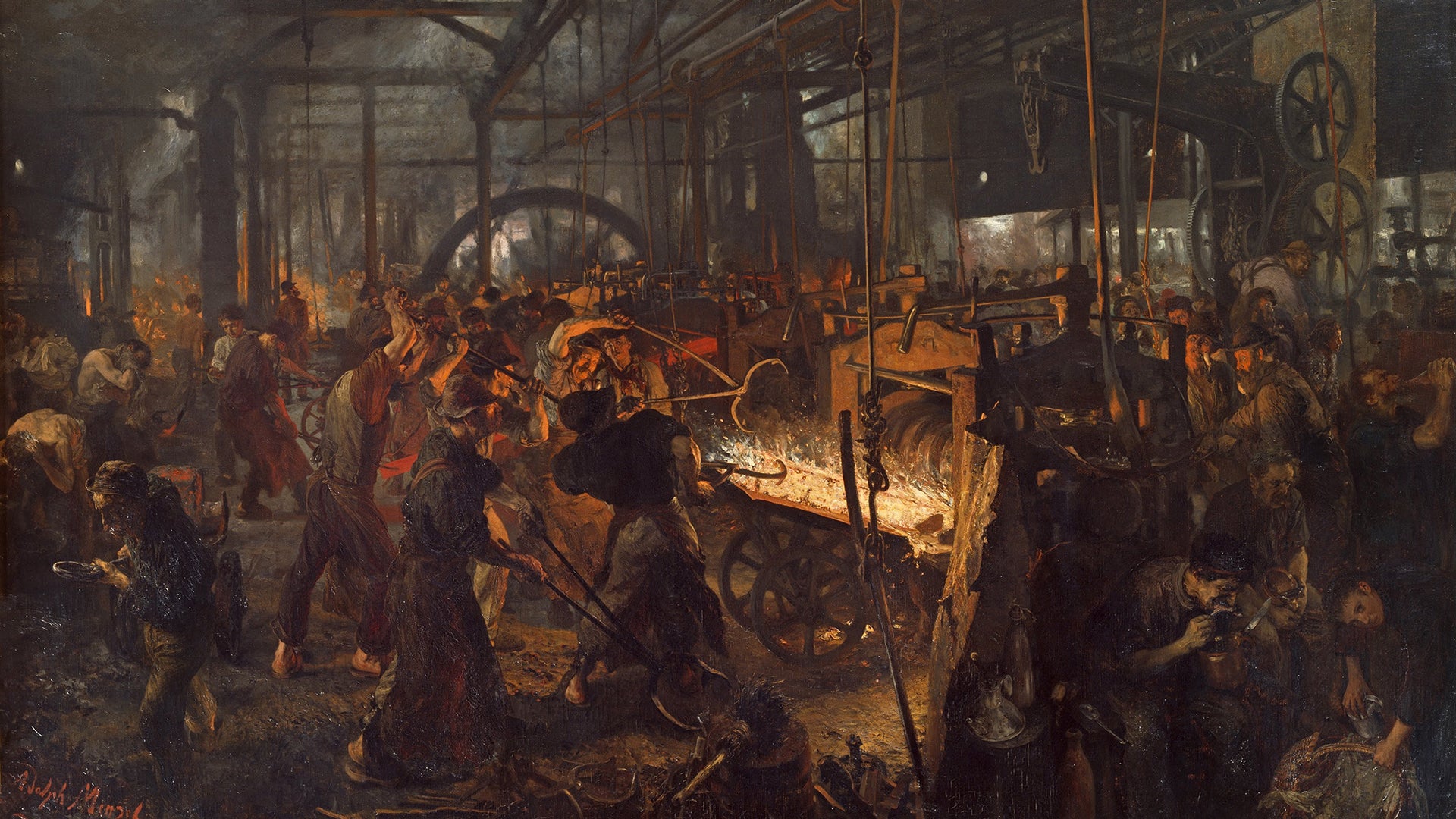
2.4 Industrial Revolution
The earliest recorded use of the term "Industrial Revolution" was in July 1799 by French envoy Louis-Guillaume Otto, announcing that France had entered the race to industrialise. In his 1976 book Keywords: A Vocabulary of Culture and Society, Raymond Williams states in the entry for "Industry":
The Industrial Revolution took place from the eighteenth century up until the mid-nineteenth century, marking a process of increased manufacturing and production which boosted industry and encouraged new inventions and innovations.
1600 - The formation of the East India Company. The joint-stock company would later play a vital role in maintaining a trade monopoly that helped increase demand, production and profit. The company helped Britain compete with its European neighbours and grow in economic and trading strength.
The Industrial Revolution was a period of major mechanisation and innovation that began in Great Britain during the mid-18th century and early 19th century and later spread throughout much of the world. The British Industrial Revolution was dominated by the exploitation of coal and iron.
The American Industrial Revolution, sometimes referred to as the Second Industrial Revolution, began in the 1870s and continued through World War II. The era saw the mechanisation of agriculture and manufacturing and the introduction of new modes of transportation including steamships, the automobile, and aeroplanes.
The American Industrial Revolution followed in the late 19th century and was an engine of economic growth in the U.S.
The Industrial Revolution led to inventions that included the assembly line, telegraph, steam engine, sewing machine, and internal combustion engine.
Working for businesses during the Industrial Revolution paid better wages than agricultural work.
The increase in the number of factories and migration to the cities led to pollution, deplorable working and living conditions, and child labour.
The Industrial Revolution transformed economies that had been based on agriculture and handicrafts into economies based on large-scale industry, mechanised manufacturing, and the factory system. New machines, new power sources, and new ways of organising work made existing industries more productive and efficient. New industries also arose, including, in the late 19th century, the automobile industry.
Pros
Advancements in production and productivity
Growth in innovations and inventions
Workers earned higher wages
Improvements in transportation networks
Cons
Deplorable working conditions and child labour
Unsanitary living conditions and pollution
Food shortages
Concentration of Capital
The Industrial Revolution was the transition to new manufacturing processes in Great Britain, continental Europe, and the United States, that occurred during the period from around 1760 to about 1820–1840. This transition included going from hand production methods to machines; new chemical manufacturing and iron production processes; the increasing use of water power and steam power; the development of machine tools; and the rise of the mechanised factory system. Output greatly increased, and a result was an unprecedented rise in population and in the rate of population growth. The textile industry was the first to use modern production methods, and textiles became the dominant industry in terms of employment, value of output, and capital invested.
1712 - Thomas Newcomen invented the first steam engine.
1733 - The simple weaving machine invented by John Kay known as the Flying Shuttle.
1764 - Scottish inventor James Watt is commissioned to carry out repairs to a Thomas Newcomen steam engine
1774 - The English inventor Samuel Crompton invented the Spinning Mule which would combine the processes of spinning and weaving into one machine,
1804 - The first recorded steam railway journey took place when Cornishman Richard Trevithick’s ‘Pen-y-Darren’ locomotive carried ten tons of iron
1815 - Cornish chemist Sir Humphrey Davy and English engineer George Stephenson both invented safety lamps for miners.
1816 - The engineer George Stephenson patented the steam engine locomotive which would earn him the title of “Father of the Railways”.
1826 - French inventor Joseph NicéphoreNiépce created the first permanent photograph from a camera image.
1829 - William Burt, an American inventor, patented the first typewriter which he called a ‘typographer’.
1831 - The first electric generator was invented by Michael Faraday
1860s - Dynamite was invented by Alfred Nobel, a Swedish chemist.
https://www.youtube.com/watch?v=vizSn5_uZNg
